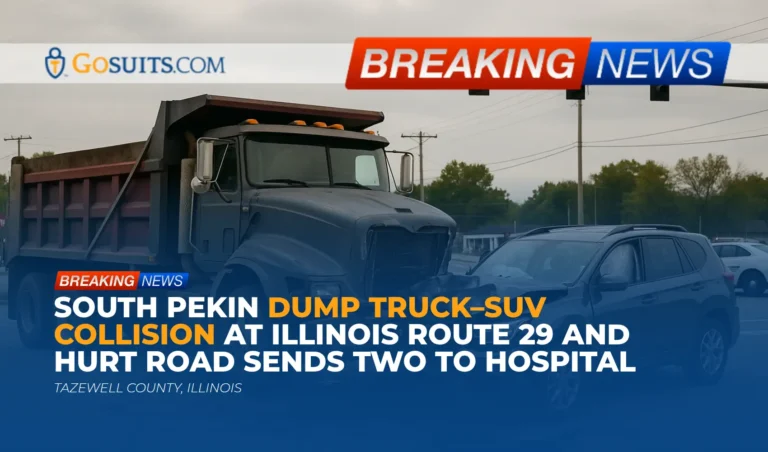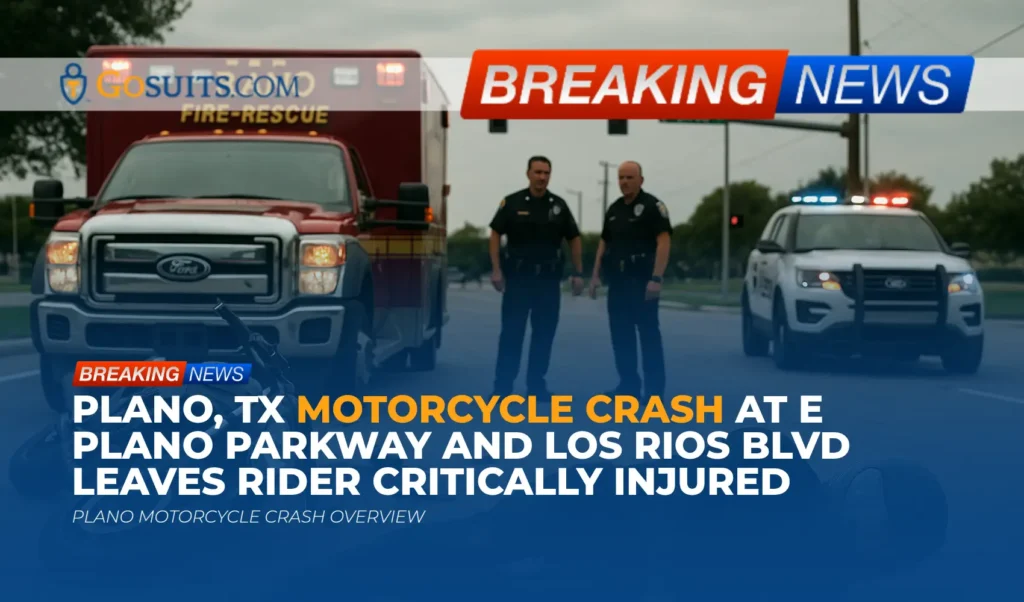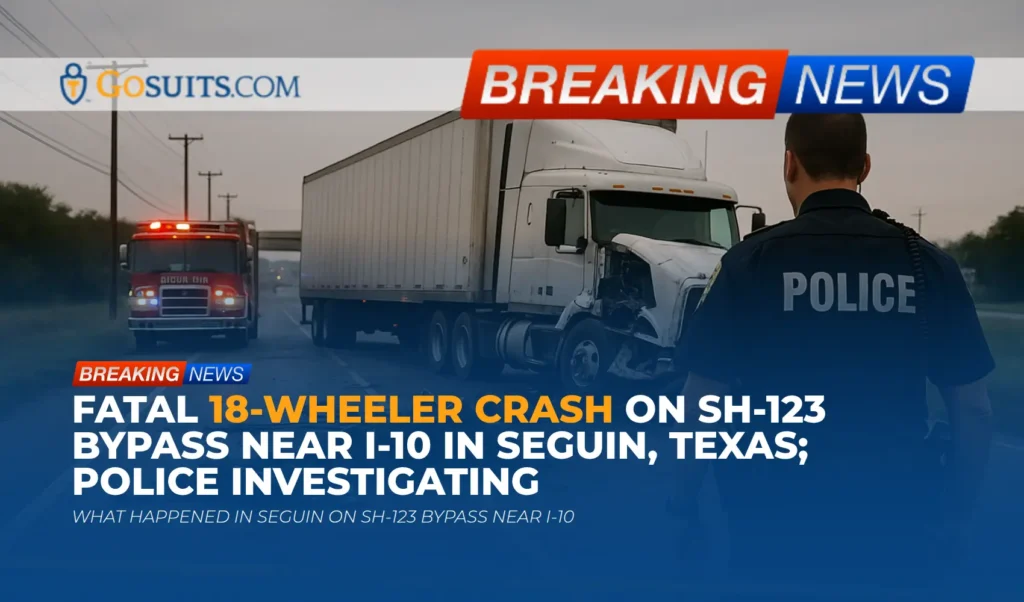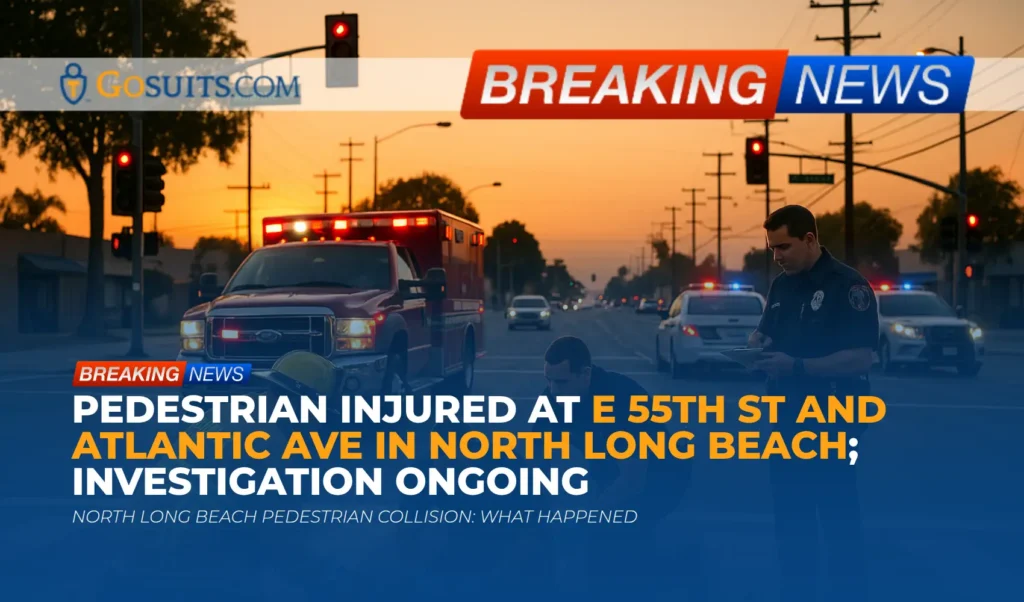- Overview of the South Pekin dump truck–SUV collision
- What we know so far from authorities
- Why intersection crashes with heavy trucks are so dangerous
- How investigations typically proceed after a serious roadway collision
- Key records to request and where to get them in Illinois
- Preserving evidence after a dump truck collision
- Understanding potential civil liability in Illinois
- Insurance coverage considerations for dump truck and SUV collisions
- Medical care, documentation, and paying bills while a claim is pending
- Practical steps to protect your rights
- Community safety and infrastructure considerations near Illinois Route 29 and Hurt Road
- Time limits: statutes of limitation in Illinois
- Where to find reliable statistics and safety resources
- Commentary from Gosuits South Pekin, Illinois Personal Injury Attorney
- Why timely action matters now
Overview of the South Pekin dump truck–SUV collision
Authorities in Tazewell County reported that a dump truck and a sport utility vehicle collided at an intersection in South Pekin on Tuesday afternoon. The crash occurred at approximately 3:30 p.m. at Illinois Route 29 and Hurt Road, near a neighborhood fuel and convenience store. Both drivers were transported to the hospital, and the roadway was closed for about three hours while deputies investigated and cleared the scene. As of the latest official statements, the drivers’ conditions have not been released.
Any serious collision involving a heavy vehicle like a dump truck raises urgent questions for the people involved and their families: what happened, why it happened, how to obtain official records, what insurance may cover, and which steps will best protect health and legal rights. The information below is intended to help community members understand these issues in clear terms and locate trustworthy, publicly available resources.
What we know so far from authorities
Based on the information released by local law enforcement:
- Time and location: Around 3:30 p.m., at the intersection of Illinois Route 29 and Hurt Road in South Pekin, Tazewell County, Illinois.
- Vehicles involved: A dump truck and an SUV.
- Injuries: Both drivers were hospitalized. Specific conditions were not made public.
- Roadway impact: The road was closed for approximately three hours for investigation and scene clearance.
- Ongoing status: The investigation is active; no public fault determination has been announced.
These are preliminary facts. A full picture typically develops over days or weeks as investigators evaluate roadway evidence, vehicle data, witness statements, and any available video.
Why intersection crashes with heavy trucks are so dangerous
Intersections are complex traffic environments, with vehicles entering from multiple approaches, turning, stopping, and accelerating. When a heavy truck is involved, basic physics makes the risks more severe. Trucks require longer stopping distances, have large blind zones, and can generate greater crash forces. National safety research has consistently shown that intersection-related collisions are common and can be severe. For example, federal traffic safety analyses discuss factors such as inadequate surveillance, misjudgment of gap or speed, and illegal maneuvers as contributors to intersection crashes. See National Highway Traffic Safety Administration resources on intersection-related crashes and large trucks for broader context (NHTSA).
Dump trucks are often categorized as commercial motor vehicles subject to specific safety standards. Federal rules address driver rest, vehicle inspection and maintenance, and load securement. These standards exist because even small lapses in a heavy truck’s operation can have outsized consequences for others on the road. For reference, see federal guidance on driver hours (FMCSA Hours of Service), vehicle maintenance (FMCSA 49 CFR 396.3), and cargo securement (FMCSA cargo securement rules).
How investigations typically proceed after a serious roadway collision
When law enforcement closes a road for several hours, it usually means they are performing a detailed scene investigation. In Illinois, officers complete an official traffic crash report that captures key facts about the location, parties, vehicles, and observed contributing circumstances. Illinois law provides for police reporting and use of crash reports after investigations (625 ILCS 5/11-406).
Investigations can include:
- Scene documentation: Measurements, photographs, roadway evidence such as skid/scuff marks, debris fields, gouges, and traffic control devices.
- Witness interviews: Drivers, passengers, nearby workers or customers, and bystanders.
- Video collection: Requests for nearby business or traffic cameras, or in-vehicle dash cameras.
- Vehicle examinations: Visible damage assessment and, in some cases, inspection for mechanical condition, brake function, lights, and tire integrity.
- Data downloads: Retrieval of electronic control module (ECM) data, airbag control module data in passenger vehicles, and telematics from commercial trucks.
- Environmental conditions: Weather, lighting, roadway geometry, signage, and sight lines.
For serious crashes involving potential commercial vehicle regulation issues, investigators may coordinate with state agencies or specialized crash reconstruction personnel.
Key records to request and where to get them in Illinois
Accessing accurate records helps families understand what happened and supports any insurance claims. In Illinois, the following records may be available:
Police traffic crash report
- What it includes: Parties, vehicles, diagrams, location, preliminary contributing factors.
- How to request: Contact the investigating agency’s Records Division. For a crash in South Pekin, the responding authority is the Tazewell County Sheriff’s Office. Request the Illinois Traffic Crash Report and any available supplemental narratives or diagrams. If unsure, ask for guidance on the proper request process. Illinois law addresses police crash reporting by agencies (625 ILCS 5/11-406).
- FOIA: If an agency requires a Freedom of Information Act request, Illinois provides general FOIA guidance at the state portal (Illinois FOIA).
911 audio, CAD logs, and dispatch records
- What it includes: Call audio, timestamps, dispatch notes, and unit assignments.
- How to request: Submit a FOIA request to the relevant dispatch center or sheriff’s office. Response times and redactions can vary.
Photographs and body-worn camera footage
- What it includes: Scene images, video walkthroughs, and officer interactions.
- How to request: Through the investigating agency’s records unit. Availability depends on the stage of investigation and applicable exemptions.
Commercial vehicle documents
- What to ask for: If a dump truck is a commercial vehicle, potentially relevant items can include pre-trip inspection records, maintenance logs, repair invoices, hours-of-service logs or electronic logging device data, driver qualification file, and load tickets. Federal rules identify maintenance and inspection responsibilities (49 CFR 396.3) and hours-of-service tracking (HOS overview).
- How to obtain: These are typically held by the trucking company and not released publicly without a legal request. Preservation letters and formal discovery may be necessary.
Medical records and bills
- What it includes: Emergency transport, hospital records, diagnostic imaging, treating physician notes, and billing ledgers.
- How to request: Directly from providers with patient authorization. Keep these organized for any claim.
Coroner and autopsy records (if a fatality occurs)
- Context: In fatal collisions, the county coroner may conduct an investigation, autopsy, and inquest. Illinois law outlines coroner duties in the Counties Code (55 ILCS 5/3-3001 et seq.).
- How to request: Contact the Tazewell County Coroner’s Office for guidance on next-of-kin access and public records.
IDOT roadway and crash data
- What’s available: Statewide crash facts, and district-level contacts who can address roadway configuration and traffic control. Illinois publishes annual summaries and safety information through the Illinois Department of Transportation (IDOT Crash Facts). For regional issues, IDOT District 4 serves this area (IDOT District 4).
When calling agencies, have the crash date, time, precise location, and, if available, a case or report number. Ask what identification or authorization is required and whether fees apply.
Preserving evidence after a dump truck collision
Important evidence can be lost quickly after a collision. Steps that commonly help protect information include:
- Send a preservation notice: A written request to involved companies and insurers instructing them to preserve vehicle data, dash camera footage, driver logs, maintenance records, and load documents.
- Photograph and retain physical evidence: Vehicle damage, child seat condition, personal items, and any visible injuries. Keep damaged parts if safe to do so.
- Identify witnesses: Record names, phone numbers, and any statements people are willing to provide about what they saw or heard.
- Secure nearby video: Politely ask nearby businesses or property owners to preserve surveillance footage; many systems overwrite within days.
- Keep a symptom diary: Document pain levels, limitations, missed work, and daily impacts.
Time is critical for obtaining electronic data from vehicles and private video systems, which can be deleted or overwritten as part of normal operations.

Understanding potential civil liability in Illinois
Without drawing conclusions about this specific collision, several legal and safety principles often shape civil liability in an Illinois roadway crash.
Right-of-way and traffic control
Fault frequently turns on compliance with traffic signals, stop signs, and right-of-way rules. Intersection design, sight lines, and posted speed limits can also matter. If traffic control devices were present, investigators assess whether any driver failed to obey them or misjudged a safe gap.
Commercial motor vehicle obligations
When a heavy truck is involved, additional duties may apply:
- Driver qualification and licensure: Operating certain commercial vehicles requires a valid commercial driver’s license and medical certification (FMCSA CDL).
- Hours of service: Fatigue can be a factor; federal rules limit driving time and mandate rest periods (HOS overview).
- Vehicle inspection and maintenance: Carriers must maintain vehicles in safe operating condition (49 CFR 396.3).
- Cargo securement: Dump trucks carrying aggregate or debris must secure loads to prevent shifting or spillage (Cargo securement rules).
- Drug and alcohol testing: Safety-sensitive positions are subject to testing requirements (FMCSA testing overview).
Depending on the facts, responsibility can extend to an employer, contractor, or maintenance provider if unsafe practices or defective equipment contributed to the crash.
Comparative negligence in Illinois
Illinois follows a modified comparative negligence framework. A claimant’s recovery can be reduced by their percentage of fault, and recovery is barred if that percentage exceeds 50 percent. See 735 ILCS 5/2-1116. This underscores the importance of a careful, evidence-based assessment rather than early assumptions.
Insurance coverage considerations for dump truck and SUV collisions
Insurance in heavy-vehicle collisions can be complex:
- Commercial auto policies: Dump trucks used in commerce are often covered by commercial auto insurance. Federal minimum financial responsibility requirements for certain for-hire interstate carriers range from $750,000 to $5,000,000 depending on cargo, though applicability varies by operation and commodity (49 CFR 387.9). Intrastate operations can have different requirements.
- Personal auto policies: The SUV may carry liability, medical payments coverage, and uninsured/underinsured motorist coverage, which can sometimes apply even if another driver is at fault.
- Multiple layers: In some cases, there may be primary and excess policies, contractual indemnity provisions, or coverage through a contractor or a municipal entity if involved in public work.
- Recorded statements: It is prudent to speak with a qualified attorney before providing any recorded statement to an insurer. What someone says can be taken out of context and used against them later.
Insurance carriers typically move quickly to gather statements and evaluate exposure. Early, informed guidance helps ensure that communications and documentation do not harm a valid claim.
Medical care, documentation, and paying bills while a claim is pending
Health comes first. After emergency care, follow-up with primary care and specialists is important to diagnose latent injuries. Diagnostic imaging, therapy, and specialist consults may be necessary. Helpful steps include:
- Keep every record: Discharge summaries, imaging reports, prescriptions, and therapy notes.
- Track all costs: Hospital bills, copays, pharmacy receipts, mileage to appointments, and lost work time.
- Use available benefits: Health insurance, medical payments coverage (if any), and short-term disability can help reduce immediate out-of-pocket expenses.
- Mind treatment gaps: Delays can complicate medical proof and recovery. Stay consistent with physician-recommended care where feasible.
Coordinating benefits can be complicated. Documentation allows later reconciliation of liens and subrogation by health plans or public payors.
Practical steps to protect your rights
- Consult an attorney before speaking to insurers: Insurance adjusters may seek recorded statements soon after a collision. It is generally advisable to speak with a legal professional first, so you understand your rights and the implications of what you say.
- Request key records: Ask the sheriff’s office for the Illinois Traffic Crash Report and any supplements. Consider FOIA requests for 911 audio and dispatch logs.
- Preserve evidence: Send preservation letters to involved companies, seeking retention of ECM data, dash cam footage, inspection records, and load documents.
- Document injuries and impacts: Maintain a treatment file and a daily log of symptoms and activity restrictions.
- Avoid social media discussion: Public posts are often discoverable and can be misunderstood.
- Calendar important dates: Note the crash date and applicable statute of limitations windows described below.
Community safety and infrastructure considerations near Illinois Route 29 and Hurt Road
Investigators and roadway agencies examine whether roadway design or traffic control contributed to a collision. Factors include signal timing and visibility, sign placement, approach speeds, lighting, and whether roadside features or parked vehicles obstructed sight lines.
Residents who observe recurring near-misses or traffic issues in a specific spot can share those observations with state and local transportation officials. In this region, IDOT District 4 handles state highway infrastructure, including Illinois Route 29, and can be a point of contact for engineering-level questions (IDOT District 4).
Time limits: statutes of limitation in Illinois
Illinois law imposes deadlines to file civil actions. While specific circumstances can alter timelines, general guidance includes:
- Personal injury: Typically two years from the date of injury (735 ILCS 5/13-202).
- Property damage: Often five years (735 ILCS 5/13-205).
- Wrongful death: Generally two years, subject to specific provisions and potential exceptions (740 ILCS 180).
Shorter notice requirements can apply if a governmental entity is involved. Because deadlines can be affected by many variables, timely evaluation is important.
Where to find reliable statistics and safety resources
- Illinois crash statistics: Annual statewide summaries and safety analyses from the Illinois Department of Transportation (IDOT Crash Facts).
- Large truck safety: Federal safety information for large trucks, including risk factors and safety campaigns (NHTSA Large Trucks).
- Commercial motor vehicle safety rules: Driver hours, maintenance, cargo securement, testing, and registration requirements (HOS, Maintenance, Securement, CDL).
- Police reporting in Illinois: Statutory framework for crash reporting by officers (625 ILCS 5/11-406).

Commentary from Gosuits South Pekin, Illinois Personal Injury Attorney
Our hearts are with those injured in the South Pekin collision and their families as they process frightening events and uncertainty. This discussion is meant to share general information and educational context, not to offer any legal advice.
At an intersection like Illinois Route 29 and Hurt Road, even a momentary misjudgment or equipment issue can produce serious harm, especially when a heavy dump truck is involved. In our experience handling roadway cases, thorough fact-gathering makes a meaningful difference. That often includes preserving truck data and company records early, along with obtaining the full police file and any nearby video that might show signal phases, approach speeds, or turning movements.
Insurance companies and corporate defendants commonly act fast after a serious crash. Adjusters may ask for recorded statements when people are still in pain, medicated, or unsure of details. Companies may move vehicles before independent inspections occur, and routine data retention practices can overwrite key telemetry or dash video within days. These dynamics can disadvantage injured people who are unfamiliar with the process. A grounded strategy ensures that critical evidence is preserved and that communications with insurers are thoughtful and accurate.
A free consultation allows anyone affected by a collision to understand rights, timelines, and practical next steps without pressure. It can clarify what to request, how to safeguard records, and how to avoid missteps that might reduce the value of a legitimate claim.
Why timely action matters now
When a major roadway collision occurs, time-sensitive steps can protect health, evidence, and the ability to recover losses later. Acting promptly can provide several practical benefits:
- Protect vanishing evidence: Video systems and electronic truck data are often overwritten quickly. Early requests to preserve footage and vehicle modules help ensure crucial information isn’t lost.
- Obtain official records promptly: Requesting the police crash report, 911 audio, and dispatch logs while the event is fresh can reduce delays and help align medical and insurance paperwork.
- Coordinate medical care: Timely follow-up appointments, imaging, and therapy support better outcomes and clearer documentation of injuries.
- Avoid harmful statements: Before speaking with any insurer, understand that recorded statements can be used later. Preparing first can prevent misunderstandings.
- Meet legal deadlines: Illinois imposes filing deadlines that can bar claims if missed. Early action helps determine which deadlines apply and keeps options open.
- Preserve vehicles for inspection: Ensuring both vehicles remain available for independent inspection can clarify crash dynamics and responsibility.
What should be done, and why it matters
- Request the Illinois Traffic Crash Report and supplements: Knowing the initial findings, diagrams, and witness listings helps guide next steps.
- Send written preservation requests to involved companies: Ask carriers to retain ECM data, dash video, inspection records, driver logs, and load documents. This can be decisive in commercial vehicle cases.
- Organize medical and expense records from day one: Consistent documentation connects injuries to the collision and streamlines reimbursement later.
- Seek a free consultation before engaging insurers: A brief conversation can clarify rights, reduce risk in recorded statements, and outline a plan for gathering evidence.
- Monitor for intersection or roadway issues: If recurring hazards exist, community reports to transportation authorities can prompt safety reviews and improvements.
Taking these steps now can make the process clearer, help prevent avoidable mistakes, and place those affected in a stronger position to make informed decisions as the investigation develops.






